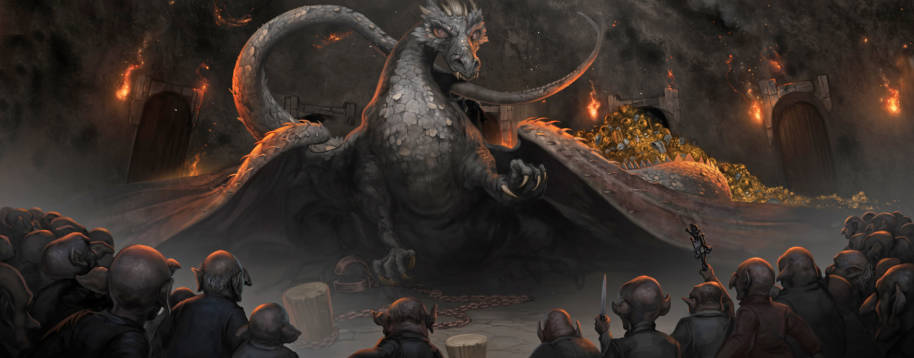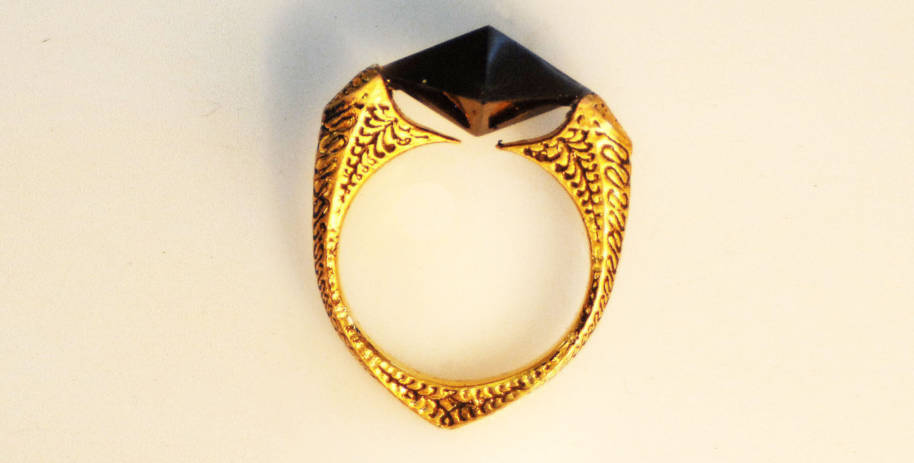
The Ancient Egyptians believed gold to be divine and indestructible. In modern folklore, it is the prized possession of every dragon. In its purest form, gold means truth and honesty, but also greed, control, shallow needs and extravagance. In Harry Potter, the theme of gold runs deep, right down to the wizarding currency, and the glimmer of a Golden Snitch.
Read on to learn how gold constantly pops up in the Harry Potter series, and what it could all mean…
Gringotts bank
From the Philosopher’s Stone to the Hufflepuff Cup, Gringotts is where the mysteries are secreted away, and we’d wager that there’s quite a lot of gold locked in some of those vaults. The bank even has a dragon, which is fitting. In Greek mythology, dragons were notorious as protectors of the precious metal.
Ladon was a dragon-type creature who guarded golden apples, for example. There was also the tale of the Golden Fleece, a precious item famously sought after by Jason and the Argonauts. And yes, you’ve guessed it: it was guarded by a big, unsleeping dragon.
In every mention of Gringotts, there is the most obvious interpretation of gold — currency, wealth and success. Of course, as with anything, excess brings darkness. In the gold-filled hallways of Gringotts the goblins themselves are obsessed with gold and will go to any lengths to protect it. This leads to a pretty hostile environment, including cruelty to the dragon who guards the extra top security vaults.

At the beginning of Harry’s journey, Gringotts doors are opened by goblins wearing uniforms of scarlet and gold, and at the end, the scarlet and gold is repeated in a far more macabre fashion in the aftermath of Voldemort’s rage. Griphook, having chosen greed and the Sword of Gryffindor, meets his unpleasant fate during the Gringotts slaughter. Here the gold littering the floors is a warning — always in moderation, never with greed.
The Philosopher’s Stone
Gold is as closely linked to the legend of the Philosopher’s Stone as it is to Gringotts bank. One myth surrounding the Philosopher’s Stone was its ability to turn mundane metals into gold. It was the ultimate get-rich-quick scheme. And the fact that the stone can be used to extend a person’s life too is, in many ways, a golden opportunity, as Nicolas Flamel discovered.

The greed of gold
From Gringotts bank to Rita Skeeter’s three golden teeth, the dark side of gold is sprinkled all over the wizarding world. When we first meet Dudley Dursley he is greedily tearing the wrapping paper off a gold watch while demanding more presents, and we instantly know the kind of person he is going to be.
The weak and greedy side of the pursuit of gold is also quickly assigned to none other than Professor Gilderoy Lockhart and his golden hair. In fact, Gilderoy is always doing something with a little gold flash, like his turquoise hat with gold trim, the little gold card he sent Hermione, and the unforgettably surly 'Cupids' with gold wings.
When it comes to magical devices that can lead to a witch or wizard’s downfall, gold marks the spot. The Mirror of Erised is a great example — it is surrounded by gold lettering and it takes Dumbledore’s wisdom to guide Harry away from its tempting depths. And the golden statues of wizards and witches in the entrance hall to the Ministry of Magic are a testament to the hubris and vanity of the wizarding world.
Then, of course, there is Voldemort and his greed. Greed for control, life and prestige. The gold Slytherin locket becomes one of his first Horcruxes and is soon followed by the Hufflepuff Cup, the heavy gold ring that belongs to Marvolo Gaunt and the Ravenclaw diadem.

The wisdom of gold
In Egyptian lore, gold is associated with the pharaoh, a word that translates to mean ‘ruler’ or ‘great house’. From the first time we meet Dumbledore he is associated with these golden qualities — his gold pocket watch, the large golden chair at Hogwarts, the long thread of gold issuing from his wand the first time we see him use it — every aspect points to someone who is strong, wise and true to his beliefs. Dumbledore is always associated with gold, but in a way which emphasises his strength of character, unending patience and complete focus on his goal to help Harry defeat Voldemort.
Brilliant flashes of gold
Gold has such a strong presence in the wizarding world. Think of Quidditch, with its golden hoops and Golden Snitch — if ever there was a sport that captured Harry’s heart, this was it. It is the warm and inviting side of gold that inspires hope. It is also at the Quidditch World Cup where we first encounter leprechaun gold, and this fake gold sets the tone for the theme that dominates Harry Potter and the Goblet of Fire.
The goblet is gold, the Age Line preventing underage wizards from entering is gold, the wands tested for the competition emit gold sparks, there’s the golden egg and, finally, the ill-fated Triwizard Cup, which emits golden light. Another symbolic meaning of gold is the aspiration to greatness — the hunt for treasure can be found throughout Greek mythology and each story had a mythical meaning and a moral. The Triwizard Cup is as much a hero’s search for answers as it is a magical competition.

In the potion world, gold plays an important role too. Harry’s Polyjuice Potion turns to gold — once again reinforcing the heroic leadership qualities he possesses — and the bottle of Felix Felicis he wins is also a stunning golden colour. It is thanks to this little bottle that he gets essential information from Professor Slughorn about Voldemort’s Horcruxes.
Then there is Hogwarts. A place of learning and magic, of mysteries and taught mythologies, and the world where Harry transforms from orphan to hero. At the start we are introduced to its golden associations through plates and goblets, and the gold and scarlet colours of Gryffindor. It is also notable that gold is associated with the sharing of wisdom and knowledge — it’s a perfect colour for the place where witches and wizards learn their trade.
Interestingly, scarlet and gold are the colours of Gringotts Bank, Gryffindor and Fawkes the phoenix. Even the colour of the enchanted sky in the Great Hall is a 'red-glow burst' as Harry faces Voldemort for the last time.


